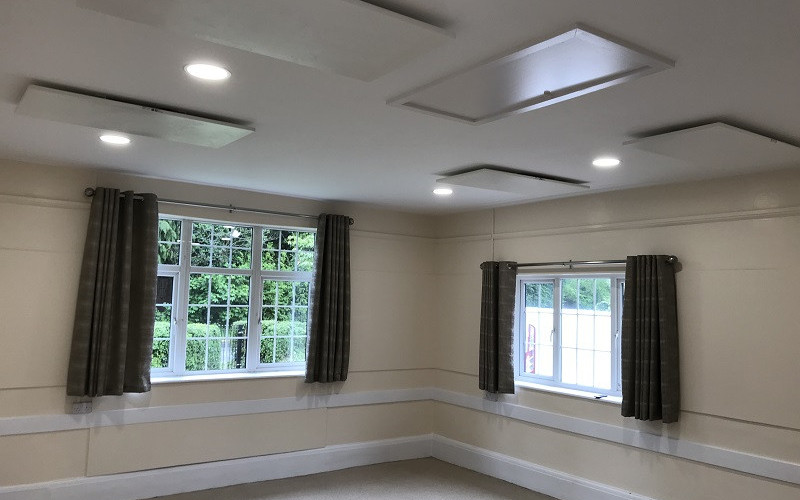The Challenge
Having been built in 1921 Denham Village Memorial Hall is not a well-insulated building. The 20+ year old convection-based village hall heating system was coming to the end of its life and the Committee were looking to replace it with a more comfortable, energy efficient and controllable heating system.
The existing village hall heating system consisted of 125 kW gas boiler used to heat the main hall via a heat-exchanger and warm air blowers situated under the stage. The stage area, changing room and corridor used traditional wet radiators. The kitchen, toilets and meeting room were heated with old 2kW electric fan heaters controlled by manual on/off switches without thermostatic controls.
The heating system struggled to heat the main hall (700m3) with the warm air blowers, only effectively warming occupants near to the stage. This air quickly rose towards the 4.7m ceiling, leaving those at the rear feeling cold despite the two air blowers beside the entrance door. Only when the warm air cooled, did it sink back towards the floor, slightly raising the ambient temperature but offering little or no real benefit to those towards the back of the hall.
The village hall is regularly used for a variety of activities by local clubs, societies and private hirers. The Committee was therefore looking for a village hall heating system which could easily be controlled whilst on or off site; accommodate the different heating requirements of the various activities and have minimal ongoing maintenance.
When heating large spaces with convection heating, like in the main hall, most of the energy consumed is used to ‘overheat’ the space above the ‘occupied zone’. The temperature difference between floor and ceiling was 15°C which meant it was taking a long time for the hall to feel comfortable and costing more than necessary to heat. The rising warm air also created convection currents which sucked-in cold air under the doors, causing an unpleasant draft around the sides of the hall.





















